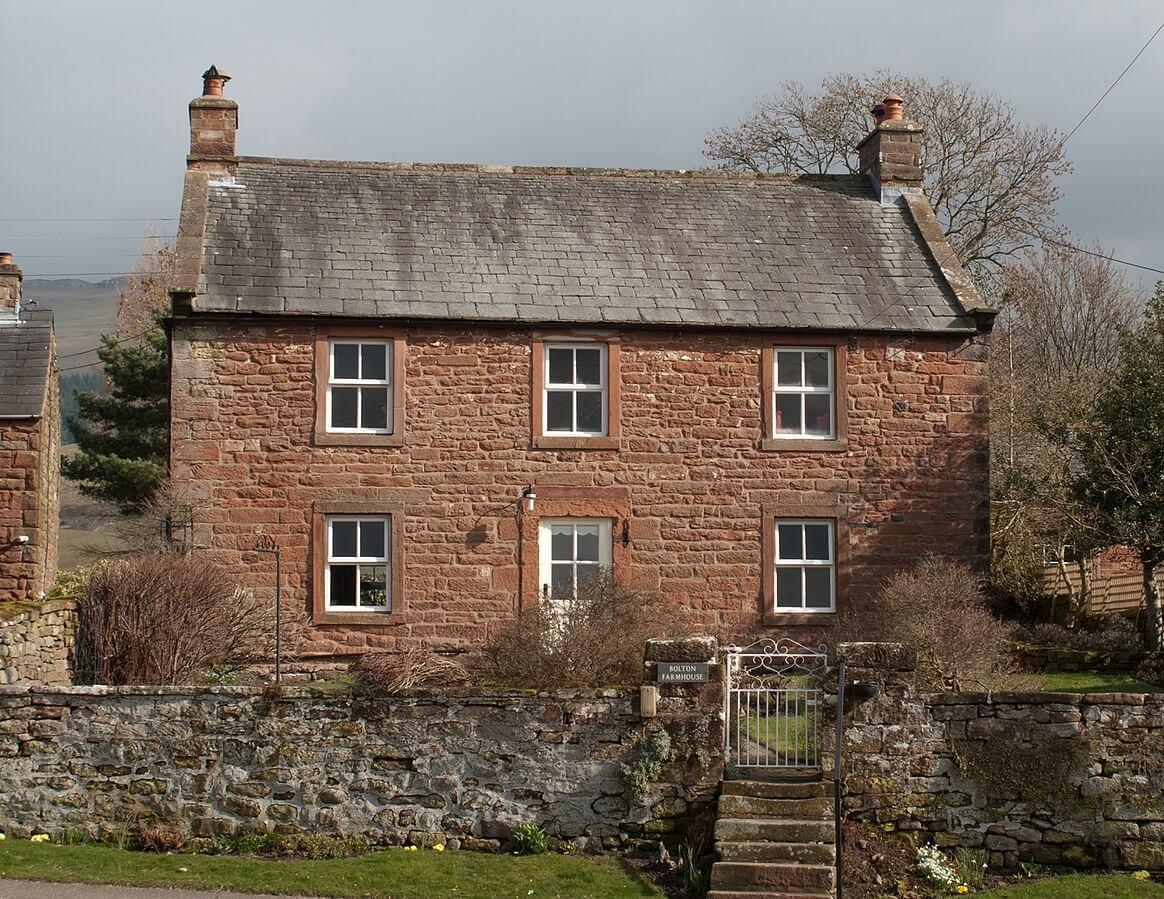Our Blog
Read Our Latest News

Why Choose Local Cumbrian Building Materials
Why Choose Local Cumbrian Building Materials
Using local Cumbrian building materials is all about tapping into centuries of architectural wisdom and environmental harmony. By choosing local, you're not just building structures but crafting legacies that stand the test of time and connect you to the heart of Cumbria's rich heritage.
Sustainable Building Practices
Why choose local Cumbrian building materials? Well, we all know that buying local is the eco-friendliest choice. Picture a truck rumbling down the motorway, spewing exhaust fumes.
Now imagine that truck's journey cut in half. That's what happens when you choose local materials.
Less travel = less pollution. Simple as that.
Buying local Cumbrian Building Materials Means You’re Supporting Cumbrian Businesses
In fact, not just supporting one business, but a whole network of them. Think of it like this: every time you buy local Cumbrian building materials, you’re giving a high-five to a neighbour. It’s not just a sale; it’s support for their livelihood.
Creating jobs
Using local materials means more jobs right here in Cumbria. More jobs mean more people spending money locally. It’s a win-win. When money is spent locally, it stays within the community. Everyone benefits.
Your home will look like it belongs here in Cumbria
Not only that, but homes built with local building materials look like they belong here in Cumbria; they fit right in with their surroundings. Local materials often come with a story. Like the slate from a quarry that’s been around for generations. It’s like a nod to the past while building for the future.
Using these materials keeps those traditions alive.
Sustainable and Strong
Cumbrian weather can be... let's say, "character-building." Local materials have been dealing with this weather for centuries. They're like the grizzled old veterans of the building world.
Crucially, they know the local climate and conditions and what works best here.
Buying Cumbrian Building Materials Can Be More Budget-Friendly
If you’re thinking about keeping down the costs of your building project you may want to consider the following factors in favour of using local building materials:
- Less transportation costs
- Often cheaper and easier to replace or repair
- Potentially lower maintenance costs in the long run
-less damage to natural habitats
It's like buying a good pair of shoes. Spend a bit more now, save a lot later.
The Heritage Factor
Using local materials is like adding a sprinkle of history to your build. It's a nod to the generations before us who built this beautiful county. Plus, it's a great conversation starter at parties.
"Oh, this wall? It's made from the same stone as Hadrian's Wall. No big deal.”
Using local materials can give your project a unique touch.
It’s like adding a bit of Cumbria’s soul to your build. Your house won’t just look like any other; it’ll have character. There’s something special about knowing your home is built with local materials.
It’s a point of pride.
You’re not just building a house; you’re building a piece of Cumbria.
Building Heritage: Keeping Cumbria's Character Alive
Ever walked through a Cumbrian village and felt like you've stepped back in time?
It's all thanks to local building materials and traditional architectural styles. Imagine each building as a history book.
The stones, slate, and timber tell tales of Cumbria's past.
Take Melmerby, for example; the whole village features red sandstone buildings. It's not just pretty - it's a living museum of local quarrying history. It's about keeping Cumbria's unique character alive.
Think of it like your gran's secret recipe:
It's been passed down for generations
It uses local ingredients
It tastes like home
That's what traditional Cumbrian buildings are like. Using local materials isn't about living in the past.
It's about respecting our heritage while moving forward.
What are Local Cumbrian Building Materials?
Slate: The Roof Over Your Head
Cumbrian slate is like the local celebrity of building materials. It's everywhere, and for good reason.
Types you'll find:
Westmorland green slate
Westmorland Green slate is quarried from the Borrowdale Volcanic Group in the Lake District. The most well-known Cumbrian slate mines are Elterwater Quarry and Honister Slate Mine.
Westmorland Green slate has been used as a building material in Cumbria for centuries. However, it is so beautiful that it has been used in many famous buildings around the UK, even Buckingham Palace, St Paul’s Cathedral, the Royal Albert Hall and The Houses of Parliament.
Westmorland Green slate is metamorphic volcanic ash, owing its distinctive green colour to the presence of chlorite minerals. It is a favourite local Cumbrian building material not only because of its attractive colouring, but its durability and capability of withstanding harsh weather conditions for hundreds of years.
Uses of Westmorland Green Slate
It is commonly used for roofing, walling, cladding, flooring, and decorative landscaping features. This slate is naturally waterproof, fireproof, and resistant to pollutants, making it ideal for both interior and exteriors.
Want to learn more about Westmorland Green Slate?
Further reading: https://burlingtonstone.co.uk/material/westmorland-green-stone/
Blue-grey slate
This is used for roofs and walls as it's tough as nails. Cumbrian blue-grey slate, also known as Burlington slate, has been quarried continuously for over 400 years in the Kirkby-in-Furness area. Burlington slate is finer and darker than Westmorland slate, with a predominantly bluish-grey or black appearance.
Cumbrian blue-grey slate is versatile and can be used for roofing, cladding, and paving due to its strength.
What to know more about Cumbrian blue-grey slate?
https://www.stonespecialist.com/news/stones-quarries/great-british-stone-cumbrian-slate
Sandstone
Red sandstone is like Cumbria's signature, but there’s yellow sandstone too. Cumbrian sandstone has been used extensively in construction for thousands of years, dating back to prehistoric times and Roman structures like Hadrian's Wall.
Different Colours of Cumbrian Sandstone
There are a variety of sandstone colours, including red, buff, and grey.
Lazonby sandstone quarried near Penrith, Cumbria, is known for being exceptionally hard-wearing and durable, making it popular for walling, paving, and bespoke features. St Bees sandstone quarried on Cumbria's west coast, is the darkest of the red sandstones available and is used in both internal and external applications.
Naturally porous
Cumbrian sandstone is naturally porous, which makes it prone to erosion if exposed to water and wind over time without proper maintenance. It develops a natural patina over time, which adds historical value and can provide some protection against weathering.
The stone is suitable for carving, enabling the inclusion of bespoke details like date stones, plaques, and even sculptures, adding unique character to buildings.
Want to learn more about Cumbrian sandstone?
https://cumbrianstone.co.uk/why-natural-stone/
Limestone
This is very tough and solid- you'll see it a lot in southern Lakeland. Cumbrian limestone, particularly the Great Scar Limestone, has been extensively used as a building stone in many settlements across Cumbria and the Lake District.
Limestone in Kendal, Cumbria
In Kendal, local Great Scar limestone dominates the fabric of houses and business premises, featuring hard, creamy grey-coloured, Dalton Formation limestone.
Limestone from Cumbria is known for its durability and ability to withstand weathering and erosion, making it suitable for structures meant to last for generations.
Settle to Carlisle Railway Viaduct
Cumbrian limestone has been used in notable structures, such as the viaduct carrying the Settle to Carlisle railway at Crosby Garrett, which is constructed of local Great Scar Limestone.
If you want to know more about Cumbrian limestone:
https://hardscape.co.uk/select/baycliff-cumbrian-limestone/
Granite
Granite's the strongman of Cumbrian stone. Found in places like Eskdale.
Historic Use of Cumbrian Granite
Cumbrian granite has been used since Roman times, evident in structures like Hadrian's Wall. Its durability and aesthetic appeal have made it a preferred material for both historic and modern buildings.
Durability
Granite is one of the hardest substances on the planet, scoring around 7 on the Mohs scale. This makes it highly resistant to scratching and suitable for high-traffic areas and surfaces that require durability, such as worktops and flooring.
Aesthetic Appeal
The unique colouring of granite, influenced by its mineral composition, adds aesthetic value to buildings. The rare blue and red hues of some granite types are particularly prized and can increase the material's cost.
Environmental Resistance
Granite's low water absorption and resistance to acidic environments make it a durable choice for exterior applications, including cladding and paving. However, it is less resistant to scratching compared to igneous rocks, requiring maintenance if polished.
Quarrying History
The exploitation of granite in Cumbria has a long history, with significant quarries like those at Kirkby Fell and Shap. These quarries have provided materials for various construction projects over the centuries.
Versatility
Granite's properties allow it to be used in a wide range of applications, from decorative stone in Victorian mansions to functional elements in railway buildings. Its adaptability makes it a valuable material in both historical and contemporary construction.
Want to know more about Cumbrian granite?
https://burlingtongranite.co.uk/5-facts-about-granite/
In Conclusion:
I hope you now understand a little more about the significance and benefits of using local Cumbria building materials for your building project, here in Cumbria. Ask Ross and Mike to help you decide on the suitability of different materials when you are discussing your plans.
Address
7 Quentin Gardens, Cumwhinton,
Carlisle CA4 8FB

Quick Links
Gallery----
Working Hours
Mon-Sat: 8:30 AM – 5 PM
Sunday: closed

